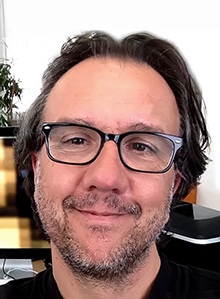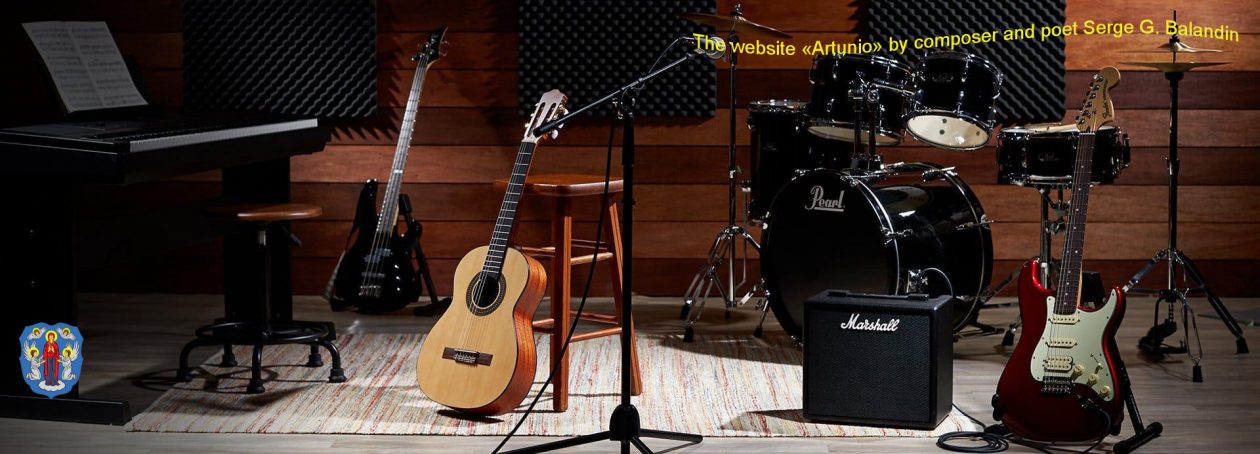
EMINENT PERSONS: AXEL HARTMANN
Axel Hartmann is a German industrial designer, engineer, who participated in the creating of such synthesizers as Hartmann Neuron, Alesis Andromeda, Access Virus Polar, Fatar Studiologic Sledge, Moog Little Phatty and Minimoog Voyager XL, Arturia Origin, Spark and MiniBrute, Waldorf Wave, MicroWave and Blofeld. In 2015 Hartmann announced a new synthesizer model. Neither the name nor even the actual manufacturer was known, but it was going to be a limited edition (20 units in black and 20 in silver) with a completely black Fatar TP8 keyboard. The 20 Synthesizer has a rethought Sledge sound engine, the tone generator of which uses wavetables and samples, and, most interestingly, an interpretation of the neural network synthesis inherited in Neuron. But more on that later…
Axel Hartmann was also the creator of the Hartmann Music GmbH synthesizer company and a member of Designbox, a company that developed Prosoniq-based technologies for the Neuron synthesizer and other musical instruments.
In 1984 Axel was to make a choice: to be a professional keyboardist or to get into a more reliable and sustainable business than that related to the unpredictable music success, and begin training in the industry which only bordered this art. Axel chose the latter as a safer option, although he could play at the famous back then funk-rock band «Scrifis». Music, of course, was still his main hobby, and he performed with some bands from time to time and he always had an opportunity to succeed. He worked with such musicians and producers as Frank Farian, Wolfgang Duren, Claudia Bruse…
After four years of training in technology at the university (Saarbrucken), in 1989 Axel joined Waldorf, where he worked on projects for such synthesizers as Wave, Microwave XT, Pulse… His first assignment was to design Waldorf Microwave, which became a classic instrument in the industry. In subsequent years, Axel was responsible for the entire range of the company. For Waldorf Wave, he received a lot of prizes and awards, including the Red Dot Design Award. As the last job for the company, Axel was assigned to design Waldorf Q. Later Hartmann took part in the development of the Zarenbourg and Blofeld concepts, but as a third-party contractor. Going to Alesis company, Hartmann came to grips with the development of the analog super synthesizer Andromeda A6, which later became a cult machine. Having come to Musikmesse Axel was puzzled by Arturia with new developments of graphical user interfaces for his programs. At the same time, such eminent companies as Moog gave Hartman the task to develop Little Phatty, Minimoog Voyager XL; StudioLogic — Sledge; Arturia — Origin, Spark & MiniBrute; and Access — Virus Polar. In 1995 industrial designers Stephan Leitl and Axel Hartmann founded Designbox in Ravensburg, southern Germany, which developed the first intuitive graphical user interface for software. Designbox (where Hartmann is the executive director) has been functioning from June 1, 1995 to the present. And after more than 10 years of work as a designer for other enterprises, Axel decided to develop his own synthesizer. Together with Stephan Bernsee, owner of the Prosoniq company founded in 1990, and using artificial neural networks in music, he developed a concept for a synthesizer with a new type of sound synthesis. Thus, in 2000, his company Hartmann Music supported by Prosoniq announced the Neuron synthesizer entering the market. However, Hartmann himself says that though the synthesizer sounds very well, so far it has not reached the desired level of development. And it also cost a very decent sum of money. For innovations in synthesis technology, Hartmann Music has been awarded several times. In 2003, on January 21, Axel married Anita Hartmann, and in March 2003, during the Musikmesse exhibition in Frankfurt, the Neuron synthesizer received the «PPV Award». This award, established by the popular German magazine «Key», is awarded to developers of high-tech keyboard instruments, the «advancement» of which, according to the readers of the magazine, can effectively contribute to the creativity of musicians. This award proves the possibilities of the new instrument. In 2004, despite the strong support of such representatives of the musical world as Hans Zimmer, and interest in innovative technology, due to unresolved issues with the distribution and production of instruments, the company ceased production. For a long time the software remained a real problem for those willing to use Neuron, but the updated version of Neuron VS came out anyway and became available on the neuronsynth.com for free. It’s time to talk about the most outstanding Axel Hartmann’s product — the Hartmann Neuron synthesizer: What is the Hartmann Neuron synthesizer all about? An unusual interface is eye-catching, but inside there’s a computer with a 1.2 GHz clock speed processor, 256 MB of RAM and a 20Gb hard drive. And, of course, there was its own operating system. Neuron features quite a rare type of sound wave generating — resynthesis. The manufacturer speaks about the application of neural networks operating algorithms. Resynthesis has already been used before, for example, in NED Synclavier or in Waldorf Wave (for creating a wavetable using an audio signal). But in Neuron, the word «resynthesis» implies a different meaning. The synthesis structure includes two oscillators (called Resynators) and a morphing module (Blender) between them. Resynators (instead of the common samples) use the so-called «models» — the result of a mathematical analysis of samples. Each model has two groups of parameters: Scape (sound source characteristics) and Sphere (sound change). Each group has three levels of parameters. The model has 6 parameters in total. The Blender module allows you to flexibly configure Morphing between models, but there is also the usual Mix method, which allows you to simply adjust the volume of the resynators, without direct morphing. That, in fact, is the essence of Neuron. The remaining elements of the synthesis are rather usual: LFO, Filter, FX… The sound architecture of Neuron is similar to, though differs a bit from conventional synthesizers. On the one hand, there are all the characteristic attributes of an analog synthesizer. On the other hand, this is an absolutely different principle of creating sounds, which does not have replicas or alternatives, and requires very intensive processor operating. This is due to the more powerful Neuron hardware base (CPU and a 32-bit floating-point mode), and some weaknesses of the instrument, in particular, only a 4-part multitimbrality and an 8-voice polyphony. The interface attracts your attention as well. Neuron glows in the dark, creating a mesmerizing spectacle, reinforced by the numerous front panel control elements. The pearl of the interface is in unique control elements. Three joysticks (the first two are used to control the resynators, and the third one — to control the filter and the effects processor) and special endless encoders giving direct access to many parameters of the instrument. It may seem that the encoders without a fixed reference point are not entirely convenient, however, once you touch either of them, the screen immediately displays the title of the adjustable parameter and its current value. So all manipulations are easy and intuitive. Neuron is a very interesting instrument for sound design purpose. It is great for composers who write music for movies. Its timbres fascinate with their versatility, infinity. This is partially due to a well-designed control of synthesis parameters. Neuron needs to be understood, you need to feel the instrument, and it will allow you to get away from stereotypes in creating sound. There are no presets for piano, violin, wind instruments, drums… It is practically impossible to get classic solo sounds, basses. Its elements represent sound effects, endless pads with complex texture. That’s why Neuron is unique. What Neuron clearly lacks is the polyphony and modulation sources. A maximum of eight voices, and only if you use one resynator. In complex patches with two resynators involved the polyphony is reduced to 4 voices, and this is often not enough for a polyphonic play with sounds with a long release. Neuron is useful in post-production: sound, special effects, sound design, dialog processing, not to mention surround-panning. The instrument will perfectly fit into the recording studio. There are both analog and digital inputs/outputs, full MIDI support, the ability to integrate with DAWs via the USB interface. Neuron is also suitable for concerts, since its operating system is very stable and provides full functionality in real time. Neuron is an instrument for really bright, demanding and daring personality, whose creative activity can be manifested in any field of the sound industry. However, there were not so many units released, and it’s very difficult to find this synthesizer on the market today. In 2015, as it’s been already mentioned, Axel Hartmann announced the release of a limited series of his new synthesizer (40 units) based on the wavetable synthesis and the Neuron sample set, and it will cost $20,000. However, for objective reasons, the release has been delayed. The synthesizer came out in 2017.
Envelope generators and LFO is not enough for such a device. It would be amazing if the instrument had a step sequencer and an arpeggiator. True, the advanced MIDI control makes up for this limitation. Joystick movements can be preset and then played back together with the pressed keys as an additional source of modulation.
Serge G. Balandin
Published: 21:08 11.10.2016
Views: 197
